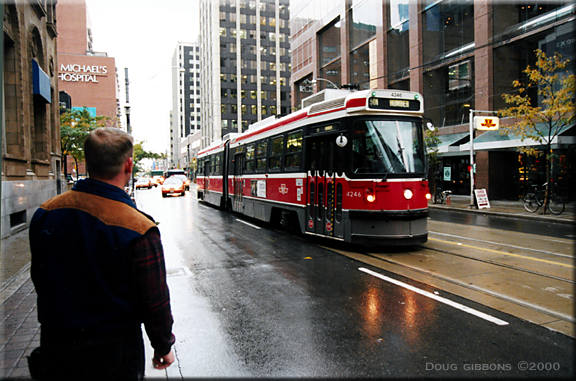To Immediate Controversy, Toronto Unveils Potential Revenue Sources for $34 Billion in New Transit

from the Transport Politic blog:
To Immediate Controversy, Toronto Region Unveils Potential Revenue Sources to Promote $34 Billion in New Transit
The Toronto region* already has one of the continent’s largest funded transit expansions under construction. By the early 2020s, Greater Toronto, Canada’s largest metropolitan area, will have four new light rail lines running on 52 kilometers of track; an 8.6-kilometer extension of an existing subway line; an airport express line; an improved central station; several bus rapid transit lines; and improved all-day commuter rail service. For a growing region with serious congestion problems, it’s a big expansion that will provide more rapid transit more quickly than any city on the continent.
Those improvements, however, hardly satisfy regional officials, who have plans for more than C$34 billion additional new transit lines. But the primary sources of funding for the current projects — Ontario Province and the Canadian federal government — aren’t yet ready to commit to such a significant investment. Thus the regional transit coordinating body, Metrolinx, developed an investment strategy released last month that recommended a variety of new funding sources that could provide the needed revenues to pay for these transit expansions.

Metrolinx’s investment strategy is notable in two ways: First, it takes responsibility for articulating clear new funding streams that would cover the cost of the transportation program. The report provides a compelling argument, founded on international comparisons, that the region must find new ways to sponsor transportation spending or it will suffer from increased congestion and reduced economic activity. It thus offers strong rhetoric for why new revenues must be established, and it documents why certain revenue sources are more effective than others.

Second, in line with the province’s “Big Move” transportation proposal, the investment strategy articulates a bold vision for the future of the Toronto region. Rejecting a car-focused approach, the strategy suggests that almost all new revenues be directed towards new public transportation capacity. Its goals including reducing the average automobile commute distance, reducing the percentage of commutes by car, and increasing the mode share of transit by more than doubling annual transit rides. Though the Toronto region’s transit mode share is currently higher than that of any U.S. city other than New York, less than five percent of employees working in its suburban areas take public transportation to work. There’s a lot of improvement to be made. .......................(more)
The complete piece is at:
http://www.thetransportpolitic.com/2013/06/03/to-immediate-controversy-toronto-region-unveils-potential-revenue-sources-to-promote-34-billion-in-new-transit/


